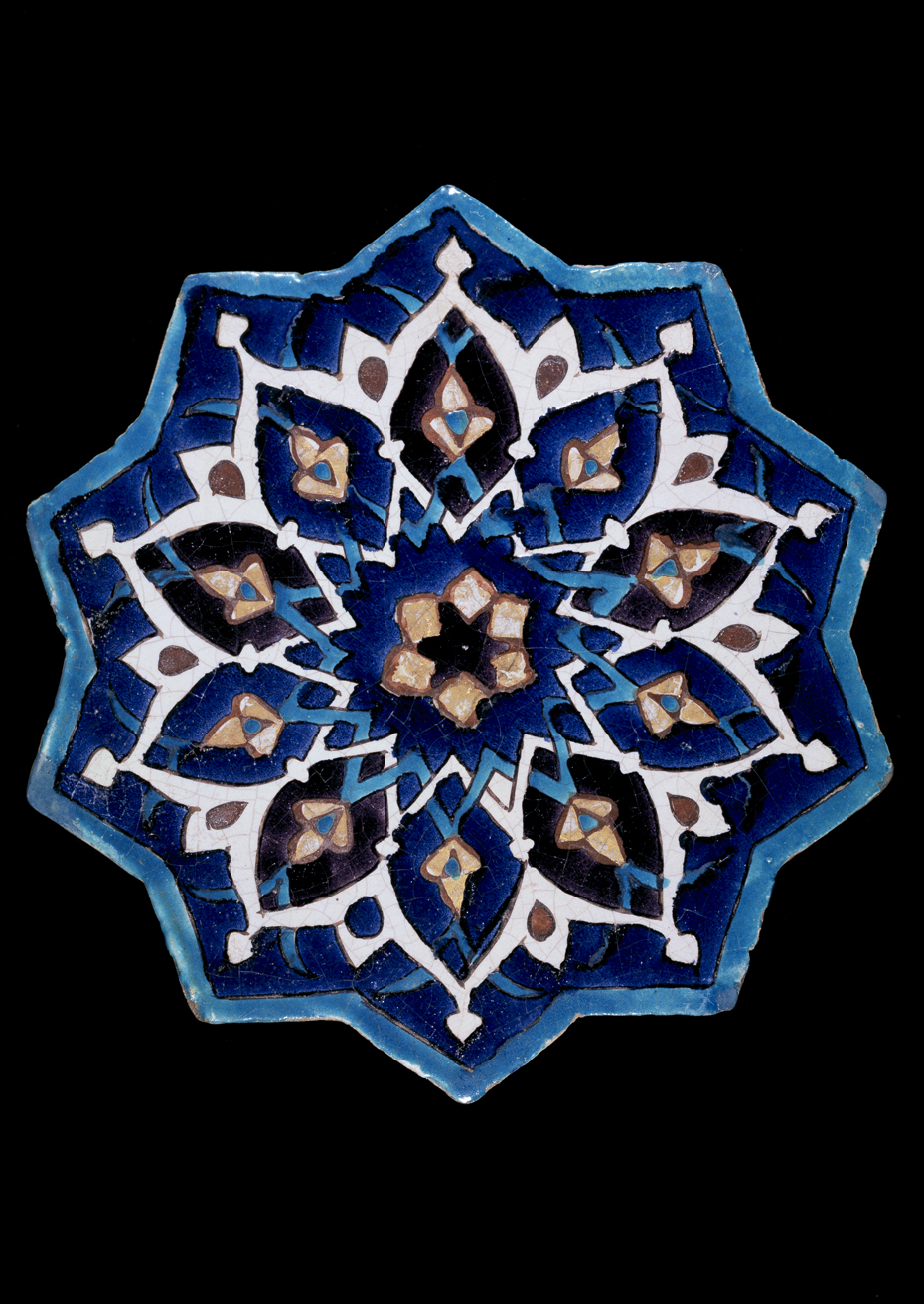
- Persia, Timurid period, 14th century
- Ceramic, 'cuerda seca' technique
- Inv. 1728
Tile
The cuerda seca [dry-cord] technique enables several colours to be combined on a single tile. Developed in Persia during the 14th century as a less costly substitute for mosaic, it is still used today.
The star-shaped decoration on this tile consists of a complex structure based on a stylised lotus-flower with ten petals. The centre is decorated with a six-point star and has traces of gilding. This star form combined with tiles in other shapes – pentagons, hexagons and other polygons – to create an elaborate geometrical pattern that normally had a twelve-point star at the centre.
The palette includes white, turquoise and manganese on a cobalt blue and gold ground. These tile panels decorated mosques and other religious buildings, helping to emphasise their symmetry and giving them a luxurious appearance.
Unknown.
Diam. 36 cm
Madrid 2001
Un jardín encantado. Arte islámico en la Colección Calouste Gulbenkian, exhibition catalogue. Madrid: Fundación Santander Central Hispano, 2001, pp. 40–1, no. 6.
Lisbon 2001
Calouste Gulbenkian Museum. Lisbon, Calouste Gulbenkian Museum, 2001, p. 38, cat. 21.